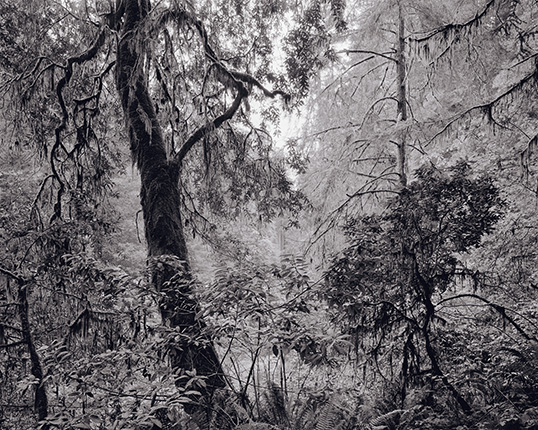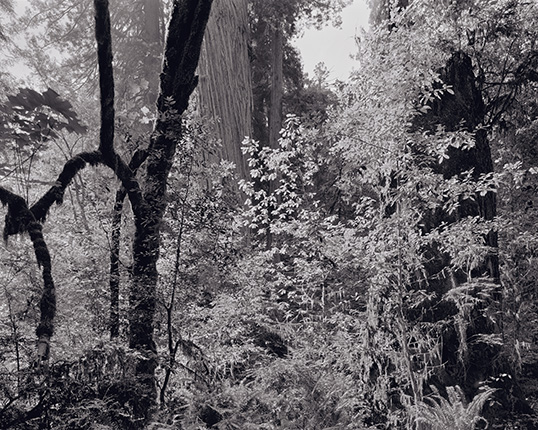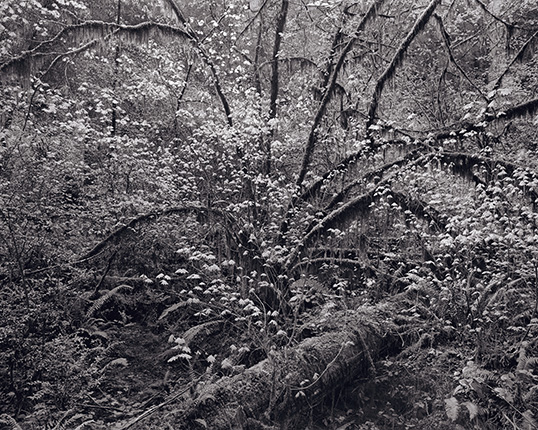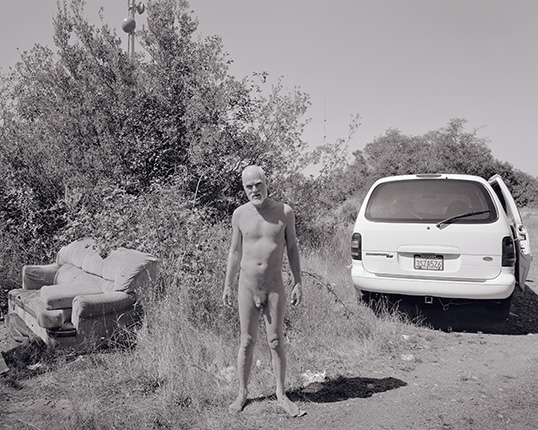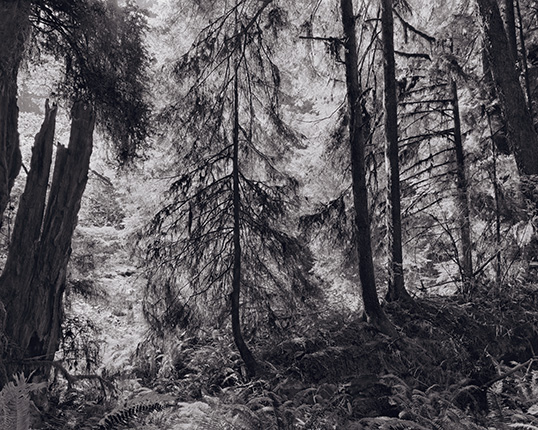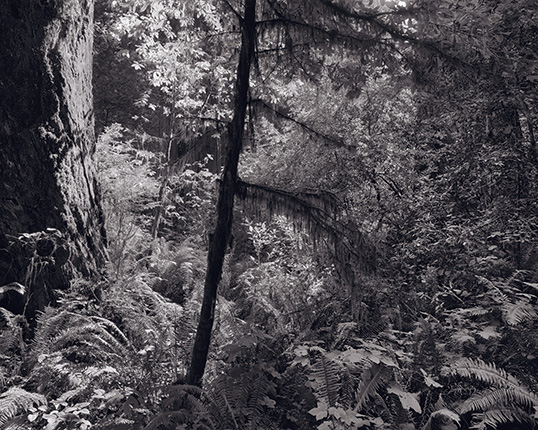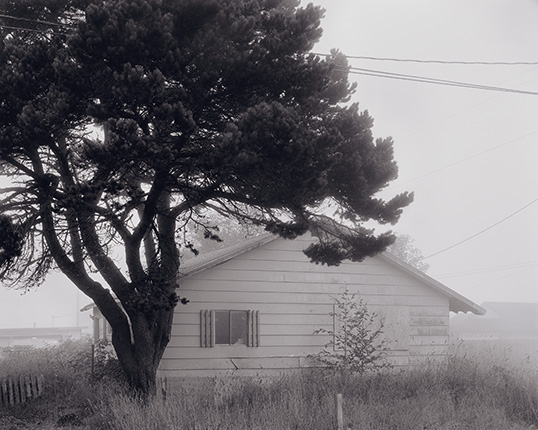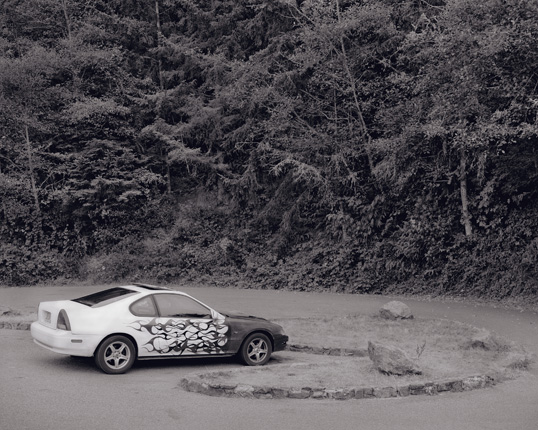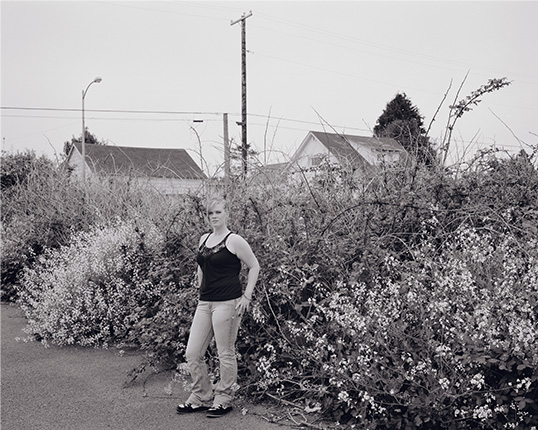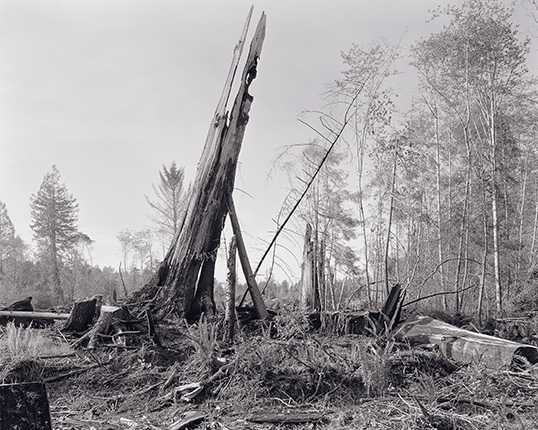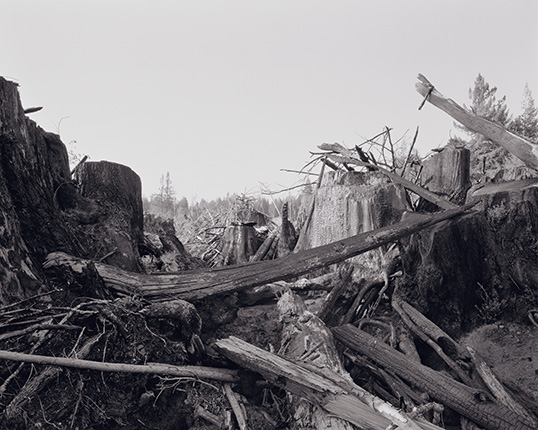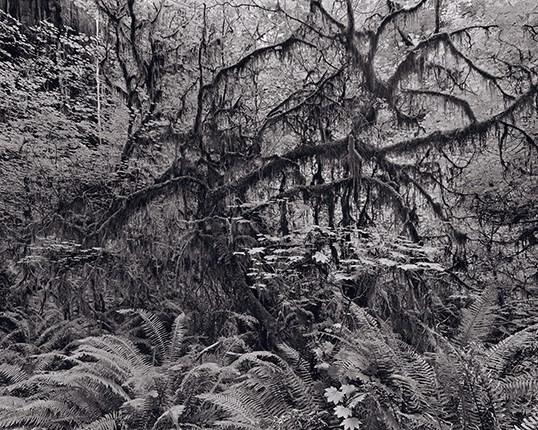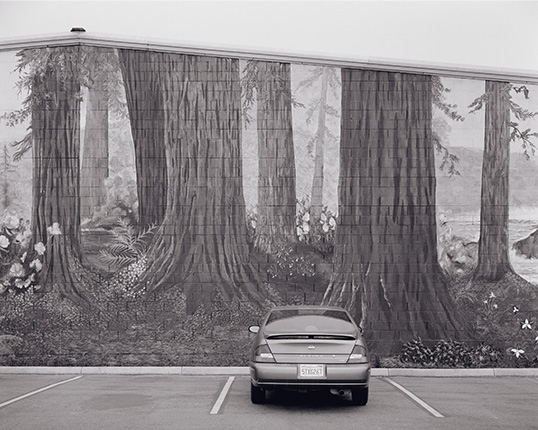Redwood Saw is a photographic narrative comprising landscapes, seascapes, portraits, and nudes shot in and around the small coastal town of Crescent City, California; the northernmost reaches of old-growth redwood forest which border the town; and the Pacific Ocean. My hope was to come as close as I could to creating a visual and structural equivalent of the American novel, through pictures rather than words—a novel about the human loss of innocence, the worldly loss of wildness, and the consequential loss of freedom and hope that attend these conditions and that mark our times.
I wanted to tell a large story about the moment we are in, here in America, by paying attention to this particular, economically depressed town and to the extraordinary landscape that surrounds it. So, on the one hand, I saw it as a local story, fascinating in all its specificity, but also as a global story. That is one of the essential tasks of photography: to recognize those salient facts which can become a vehicle for metaphor. Crescent City—a place that at one time must have seemed to possess an almost limitless abundance of natural resources—is revealed here as a compelling and dramatic model of a former boom town that staked its future on what can only be described as an “unsustainable cultural and economic reality.”
It was equally important to me that the story be subjectively accurate, and that the relationship between subjectivity and testimony provide the work with its necessary tension. The portraits of the townspeople are sympathetic explorations of Eros, striving, and human failure. They are studies of people who are fighting hard battles—people who, not unlike the forest itself, have little control over the larger (and largely unseen) forces that dictate their lives.

